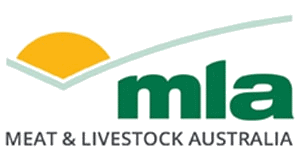TEYS10 - Rockhampton Carbon Footprint
| Project start date: | 22 September 2008 |
| Project end date: | 22 December 2008 |
| Publication date: | 01 April 2011 |
| Project status: | Completed |
| Livestock species: | Sheep, Goat, Lamb, Grassfed cattle, Grainfed cattle |
| Relevant regions: | National |
|
Download Report
(0.2 MB)
|
|
Summary
The Australian red meat industry depends on large quantities of fossil fuel energy that leads to emissions of carbon dioxide. The treatment of wastewater from red meat processing also leads to large emissions of greenhouse gases, primarily methane. The reduction of greenhouse gas emissions is one of the major challenges for the industry in order to ensure future sustainability. The use of electricity is more greenhouse gas emission intensive than natural gas or other fuel sources. 67% of total energy emissions are related to electricity use whereas biofuels, such as wood waste or macadamia nut shells, are considered to be zero emission sources. Greenhouse gas emissions are differentiated as follows:
Scope 1 Emissions created directly by a company from sources that are owned or controlled by that company. Emissions from combustion of fuels -natural gas, coal, diesel - as well as fugitive emissions, such as those from wastewater treatment, are included.
Scope 2 Emissions created as a result of the generation of electricity purchased by the company. These are indirect emissions that arise from sources other than the consuming company.
Scope 3 Emissions that are generated in the wider economy. These are indirect emissions and arise as a consequence of the company's activities, but occur from sources that are not controlled by the company. Examples include third party deliveries, business travel activities and use of sold products and services.
The red meat industry has been successful in reducing electrical and thermal energy emissions by 12% per tonne hot standard carcase weight since 2003 to an average emission of 554kg CO2-e/tonne hot standard carcase weight. The reduction of greenhouse gas emissions and the utilisation of clean energy are major focus areas for the red meat processing industry. MLA and AMPC are supporting the industry to reduce greenhouse gas emissions through:
Development of new technologies to mitigate emissions
Improvement of processes and methods for wastewater treatment
Reduced fossil fuel usage and use of covered anaerobic lagoons
Accessible knowledge to the industry through training
Detailed monitoring and calculation of actual emissions
Implementation of carbon credits for the use of green energy and carbon capture or sequestration
More information
| Project manager: | Rebecca Underwood |
| Primary researcher: | Teys Australia Pty Ltd |


